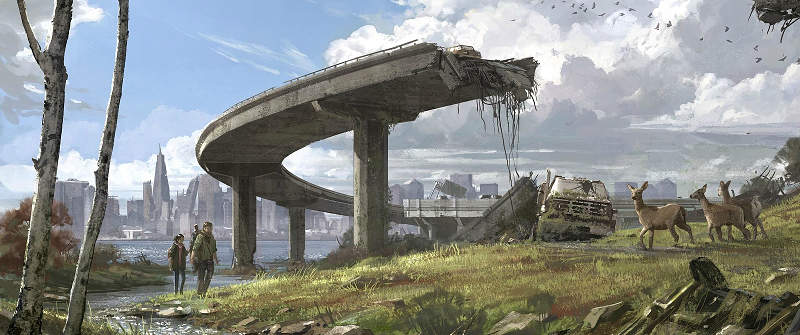Security Concerns During Timeline Of The Rolling Societal Collapse
Consider a common sense approach for your security during the timeline of a rolling societal collapse. There will be at least several stages of concern as the collapse rolls out. I’m talking about a (the) societal collapse, which I suspect most of you are aware. It’s happening right now. And it seems to me that this societal collapse will worsen, and possibly quite dramatically – given the potential for trigger events accelerating the timeline.
Realization that it’s happening
Early warning. The sooner you realize that it’s happening, the more time you’ll have to prepare and/or take appropriate actions.
Those who have an extent of situational awareness, and a desire to investigate and discover that which is hidden – will tend to recognize the early warning signs. In context of today’s current events however, much of it is out in the wide open. Realization of today’s rolling societal collapse is pretty obvious.
Take this time to develop plans and strategies for the next stages of societal decay and collapse.
More Criminals, Crimes, and Crazies
As opposed to ordinarily ‘good’ people who may become desperate (I’ll speak towards that in a minute), you’ve got an increasing criminal element. This is getting worse. Much worse. Gangs. Cartels. And the many ‘criminals’ within their massive web of influence. They are ruthless. Drugs, Fentanyl (killing ~ 100,00 a year in the U.S.). Human trafficking, a mulit-billion dollar business. Most all of it flooding through from our southern ‘border’ into the far reaches of our nation. Unfortunately some of the worst elements from outside are mixed in with the flood of ‘humanity’ entering our country nearly unabated.
Politics aside, do realize and understand that we’re talking about a dumbfounding number of criminals, gang members, and cartel flooding in. Although the worst affected are border regions including Texas, Arizona, and California, the fact is the tentacles are reaching everywhere.
As societal decay continues, this element is becoming more powerful and increasingly dangerous – given the lack of government interest into taking effective action against it. Therefore it is your personal responsibility to be aware, mitigate, and prepare for further decay.
The crazies. Seems like much more of them. They have unleashed untold violence against unsuspecting innocent people caught in random acts of violence. As resources dwindle, there will be more of them. Be aware.
As people become dangerously desperate
As the security timeline of SHTF societal collapse rolls out further, there will be increasingly desperate people. Survival instincts kick in, and some of those people will turn to desperate measures.
I’m talking about a period along the timeline where societal collapse has devolved into a sort of ‘greater depression’ era. Given that 60% of Americans live paycheck to paycheck, that’s a lot of people living on the edge. When a sufficient number of a population becomes sufficiently ‘unhappy’, things will get rather dicey.
Your security concern in this regard? Your neighbors, your local region. Logic and common sense tells us that cities are at highest risk, as well as very densely populated regions. Many of these places are already essentially ‘war zones’. Just think how much worse as societal collapse accelerates.
You will not be immune from this. Regardless of where you live. However you can begin to prepare and plan.
Don’t count on a quick recovery, or any recovery
What I mean is.. while thinking about, or planning for a societal collapse, don’t make the mistake of believing it’s a bump in the road. Following collapse, things will never go back to the way they were. It will be something different. And what that turns out to be, will be up to the final outcome.
There are several ways this could go. Most all of the ways are not good for your personal liberty and freedom. Given my own view of the bigger picture – coupled with a sort of cynical, but I believe realistic outlook – I’m sorry to say that I don’t see a recovery whereby we at least remain on the same level we are today.
Tomorrow’s world will be different. Count on it. We are well along our way on this timeline of societal decay. The follow-on effects will likely be.. not so good. How you are affected, and will be affected, will largely depend on where you live and whatever preparations that you have made.
What to do?
My suggestion with context to this article’s topic, is to consider your security concerns during the timeline of societal collapse. Take appropriate actions in preparation thereof. Think about the rolling collapse in categories whereby they each may relate to a security concern. Then, mitigate.
The principals of survival include food, water, shelter, general security (and others). Look at the various aspects of security for each of these.
For example, not only your food security – in that you have what you need, or the ability to self-sustain to an extent – but also the security aspects to ‘keep’ what you have, etc..
Secure what would be or become more valuable assets as societal decay unfolds.
Secure yourself, your household. Can your neighborhood be secured? How? Etc..
Open your eyes. See what’s going on out there. The societal collapse is quite underway.
[ Read: Most Refuse To Believe An Emergency Is Happening – When It’s Happening ]

